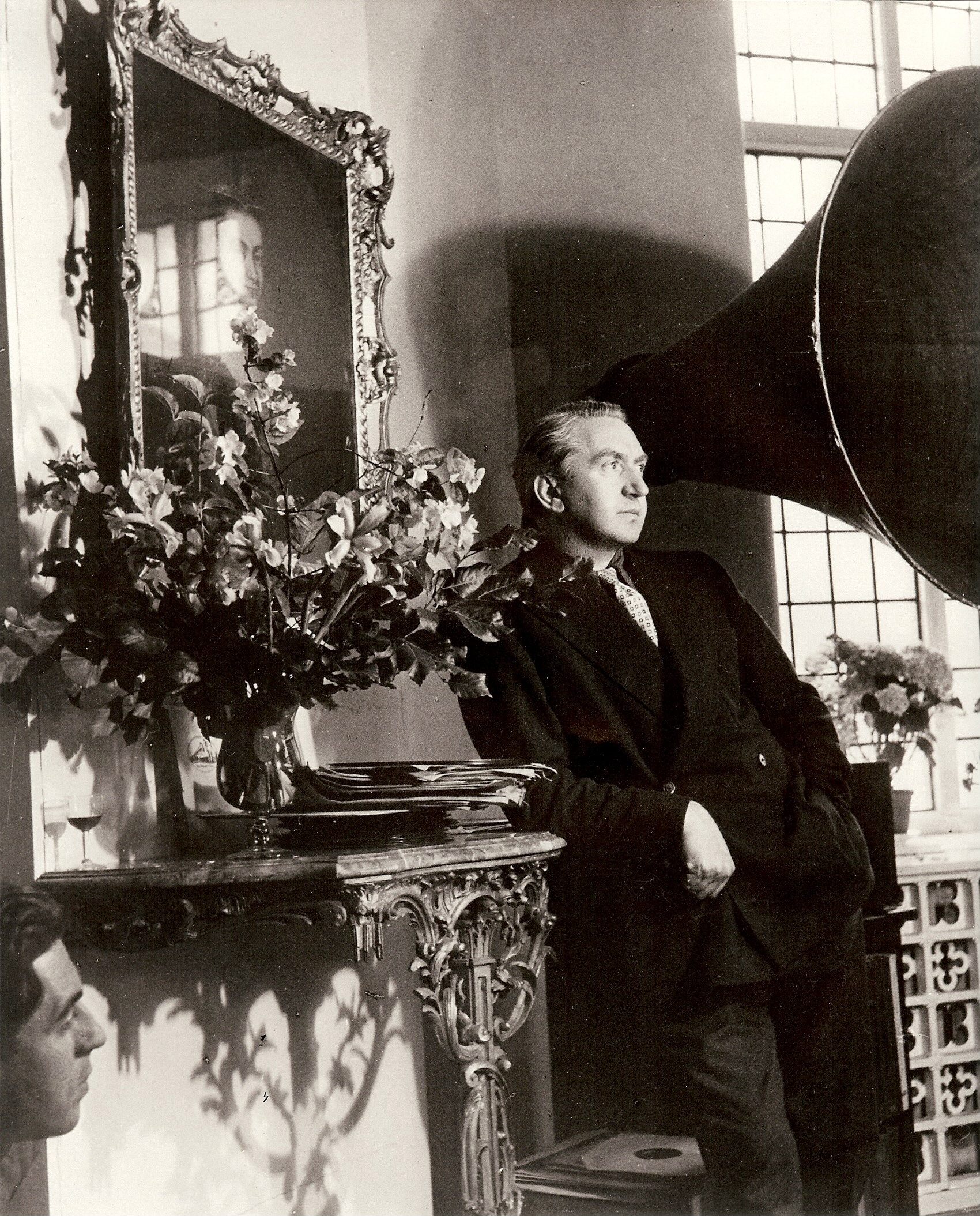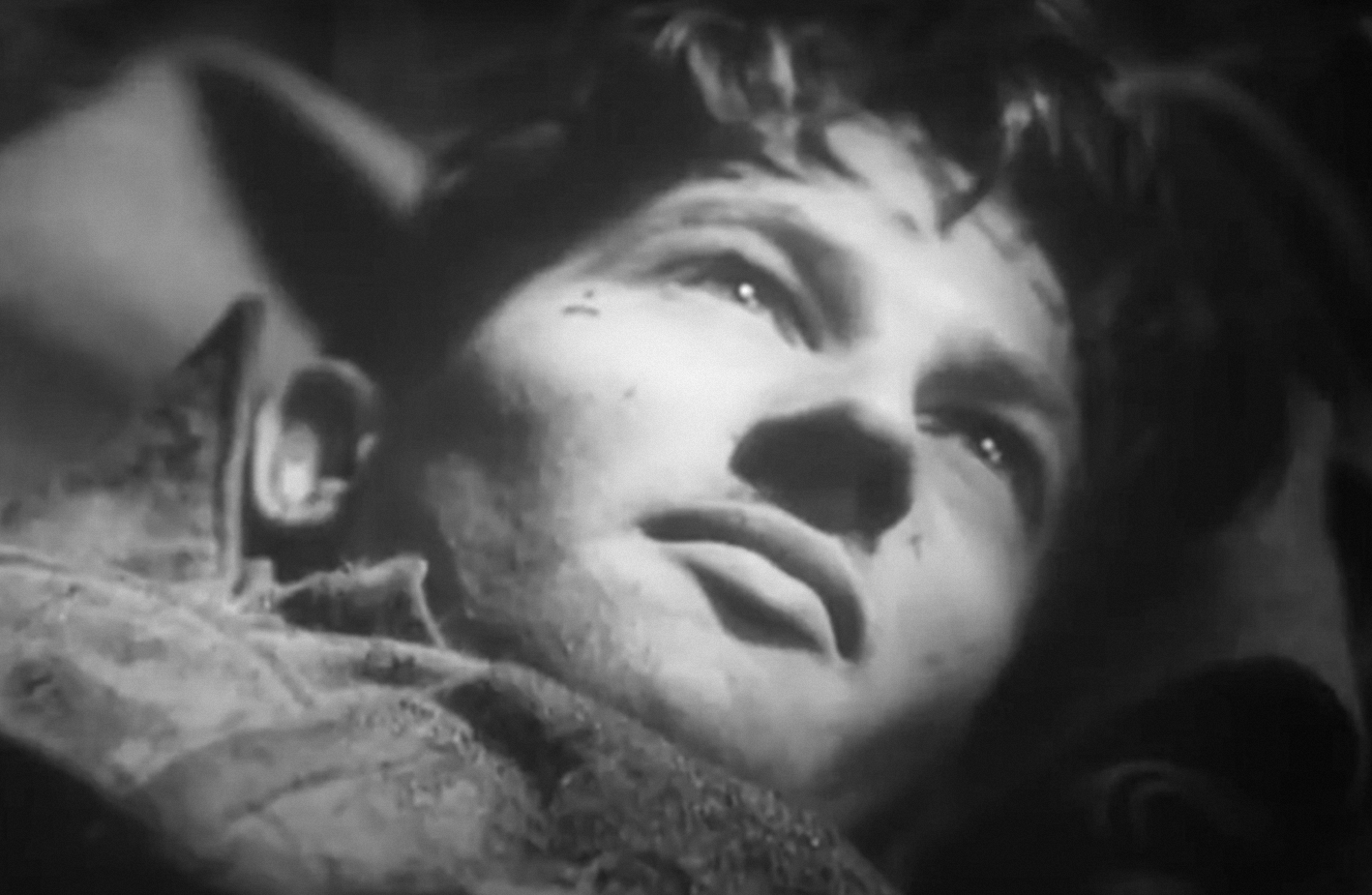By Lance Pettitt
The part that Irishmen have played in British military conflicts down the years is an established theme in contemporary historical writing. Belfast-born Brian Desmond Hurst (1895–1986) is notable for his dual contribution in this narrative as both a war veteran and a cinematic visionary (see Museum Eye, HI 31.5, Sept./Oct. 2023, pp 56–7). As a teenager who had signed the Ulster Covenant, he enlisted as a ‘loyal’ son in September 1914 with the Royal Irish Rifles. He survived dysentery and hand-to-hand fighting in Gallipoli (where c. 4,000 Irishmen perished) and action in Serbia before he deserted in 1917. Abandoning the bayonet, he went into fugitive exile in Toronto, where he took up the brush to study art in the early 1920s. It was there that he found the vocation that eventually led him, during the Second World War, to become the filmmaker who directed Theirs is the Glory (1946), which told the story of another military defeat, the Battle of Arnhem.

80TH ANNIVERSARY OF ‘OPERATION MARKET GARDEN’
As the 80th anniversary is marked by a screening of Hurst’s film at the Imperial War Museum in Duxford this September (2024), I want to re-examine Hurst’s remarkable feature-length dramatised reconstruction of the ill-fated ‘Operation Market Garden’, the code-name for the combined airborne attack by paratroopers landing behind German lines in the Netherlands, which resulted in 8,000 allied troops being killed or injured. What I want to argue here is that audiences and critics who praised it were not moved by the film’s much-vaunted documentary verisimilitude but by the revelatory, emotional power of Hurst’s cinematography, which draws on religious tropes of male beauty and Christian suffering.
Hurst had come to film-directing in the 1920s after spending time in Paris, mural-painting in California under the tutelage of Hugo Ballin and working in art direction with John Ford on silent movies, painting with light. He got established in a revived British film industry in the mid-1930s, working on ‘quota quickie’ crime, and broke through with an Irish War of Independence film, Ourselves Alone (1936), which was promptly banned as ‘Sinn Féin propaganda’ in Northern Ireland’s cinemas.

PROPAGANDA FILMS
Talking up his Gallipoli service and keeping silent about his desertion, Hurst was asked by Alexander Korda to co-direct The Lion has Wings (with Michael Powell and Adrian Brunel), an early propaganda film released in 1939 that overstated Britain’s preparedness to take on the Luftwaffe. Hurst readily worked on government information films like A Call for Arms! (1940) about women in a munitions factory, which featured an Irish supervisor (Coleen Nolan). He directed Dangerous Moonlight (1941), a popular melodrama that featured a love-triangle of supressed desires between a Polish airman, a US journalist and an Irish pilot serving in the RAF. When US troops were stationed in Northern Ireland, he was there to direct A Letter from Ulster (1943), a touching short about two American brothers-in-arms that underscored how welcomed they were by the locals. ‘A goodwill documentary’ shot at various locations, it was backed by Stormont and aimed at US audiences. Hurst somehow managed to please Northern Ireland Prime Minister John M. Andrews yet also to smuggle in dialogue that questioned the border and a Fordian finale sequence showing a Catholic Mass.
As is made clear by the pre-film ‘Foreword’ titles, Theirs is the Glory (1946) pays filmic tribute to the bravery of those who lost their lives in a catastrophic defeat almost immediately after Victory in Europe (VE) had been achieved. At the time, press and newsreels had to present Arnhem’s events as a ‘magnificent losing fight that was as glorious as any victory when the sky rained men’. With its religious, Lord’s Prayer-echoing title, Theirs is the Glory was the film with which Hurst was most satisfied as a director, firstly because it allowed him to honour Britain’s debt to ‘just ordinary men’ and secondly because of the sense of camaraderie with the soldiers that developed during the production. His recollections of the film’s genesis and production publicity stress the importance of using the actual survivors from the battle and shooting it on location to recreate a ‘true documentary reconstruction of the event’ and to achieve utmost verisimilitude. From its première and throughout its general release it made a strong public and critical impact.

POWERFUL EMOTIONAL RESPONSES
I want to critically examine the conventional claims made for its authenticity, as well as to explore how Hurst creates the powerful emotional responses that the film engenders. From the point of its instigation as a film, led by Leonard Castleton-Knight, who was head of Pathé News, all through Hurst’s account and most of the contemporary critical discussion of the film, its truth claims and fidelity to actual events are seen to be the guiding method to the treatment of the material. ‘In the scenario, we just followed the battle day by day.’ In my view, however, the film adopts an odd, mixed mode of address to an audience who knew the outcome of events on screen. This mode is characterised by the tension between facts and fiction inherent in any dramatised reconstruction, but in this particular film there is telling tension between voice and image. Working in parallel to the sequential build-up of suspense or interruption of surprise, the film is tragically driven by a pathos of confirmation. The film also requires the viewers to give of themselves, to open themselves up to an emotional engagement and for screen time to work in an affective way—that is, to feel with the men on screen who are themselves, through the process of re-enacting, remembering their experience. Crucially, these moments are delivered in slow tracking shots, silence, disembodied voice-over, tableaux of men in profile, or motionless facial close-ups.
The decisions to use non-actors who were the surviving soldiers from the battle, to have the radio war correspondent (Stanley Maxted) go back and re-voice his reports and not to build sets in the studio were significant. Nevertheless, to shoot on location in the ruins of Arnhem itself does not, as people like Euan Halpin have noted, necessarily confer an absolute form of representational ‘truth’ on the film. Indeed, within the opening sequence the screen shows a landscape image of the town by the river, introduced by a Dutch-accented voice-over telling us that ‘this was our little town of Arnhem’, but the camera pulls back to reveal the gilded edge of a picture frame. The actuality promised by the words of the inter-title a moment ago is revealed to be a construction.
Hurst himself admitted the constructed nature of what he was doing when he went on a casting ‘recce’ looking for soldiers on Salisbury Plain: ‘I then selected men for the film very carefully and we had to pay the army three pounds a day for each paratrooper’. Although soldiers were ‘playing themselves’, Hurst chose them for their accents—working class, regional and Irish—but more importantly for their photogenic potential: what their looks might signify on screen. Although there is no list of acting credits, within the film an early, slow tracking shot in the barracks shows soldiers anxious before battle, and a voice-over with ‘received pronunciation’ accent names Sergeant John Bateman of County Down, Ireland [sic], John Daly of Waterford and Tommy Scullion of Ballymena, Co. Antrim, amongst the troops about to die.
Under Hurst’s direction, Theirs is the Glory moves beyond the ‘day by day account’ of events to find instead a way of expressing fear, male camaraderie and suffering, or, as one reviewer put it, how ‘to articulate heroism’. The most memorable sequences offer the male face on screen as an object of beauty to contemplate in a quasi-religious state, to witness desolation and death. To do this, Hurst drew on his knowledge of religious art and his practical skills in portraiture, acquired in Toronto, from the Beaux Arts, commercial mural painting and by collecting art. Hurst himself was to become devoted to St Thérèse of Lisieux, and formally converted to Catholicism in the late 1940s. This combination of aesthetic and spiritual interests defined his practice of sculpting with light within the frame of the camera.
Hurst explained to Christopher Robbins how he worked with the young, non-actor soldiers:
‘I would lock the soldiers into a close-up so they couldn’t move and say: “Just think what you felt at the time when the RAF dropped the desperately needed supplies on the German lines [by mistake]”. The results were superb.’
What Hurst describes is a technique of emoting, of drawing on a recent emotional memory, rather than acting as such. Hurst wants immobile figures, men composed in groups or a single face—like theatrical tableaux vivants—held in an arrested moment shaped by angles, shadow and light. The effect of these sequences is to produce the qualities of ‘poetic realism’ that Michael Powell praised so highly.
ROYAL COMMAND SCREENING AT BALMORAL FOR GEORGE VI
The release of Theirs is the Glory saw Prime Minister Atlee (another Gallipoli veteran) attend the première at the Gaumont Haymarket in London, and the film had a high-profile screening in Ottawa with Canadian dignitaries, with a Royal Command screening at Balmoral for George VI. Hurst was photographed by Angus McBean, joining other celebrities of the era, and was recognised by critics like James Agate to have become part of the pantheon of post-war British directors. Throughout his career, Hurst’s films express the significance of Irishness in Britain and to its culture, and yet asserting his Ulster Irishness from a London domicile accented an anomalous position more sharply felt after 1949. After Letter from Ulster (1943), Hurst never worked in Northern Ireland, but he gave a key role to Joseph Tomelty in Simba (1956) that added a frisson to a film about the Mau-Mau in Kenya.
Hurst enjoyed regular contract work with Rank in England and abroad throughout the 1950s, but he collaborated with Michael Killanin and John Ford to set up Four Provinces Pictures in Ireland, with a London letterhead. Hurst had not endeared himself to ministers of the southern Irish state in efforts to establish a permanent film studio. It was a former Somme veteran, Dublin IRA and National Army general Emmet Dalton, who got the job of managing Ardmore Studios. Hurst–Killanin’s The Playboy of the Western World (1962) was shot on location, but Hurst was diplomatically snubbed by the Department of External Affairs over its international release and support.
Hurst’s cinematic achievement is recognised in Belfast with a ‘Directors Guild of Great Britain’ [sic] blue plaque at the Queen’s Film Theatre, and one of the soundstages at Titanic Studios took his name. The ambivalence about his sense of displaced Ulster Irishness was expressed in Irish characters and narratives threaded through broader patriotic narratives. This ensured that the hopes and dreams of exiles, second-generation Irish and those of mixed Irish heritage did have a telling presence in British mid-century cinema.
Lance Pettitt is the author of The last bohemian: Brian Desmond Hurst, Irish film, British cinema (Syracuse University Press, 2023).
Further reading
A. Beevor, Arnhem: the battle for the bridges, 1944 (London, 2018).
J. Chapman, ‘British cinema and the Second World War’, in J. Hill (ed.), A companion to British and Irish cinema (Oxford, 2019).
R. Doherty, Irish men and women in the Second World War (Dublin, 2021).
D. Truesdale, Steel wall at Arnhem: the destruction of 4 Para Brigade (Warwick, 2016).
